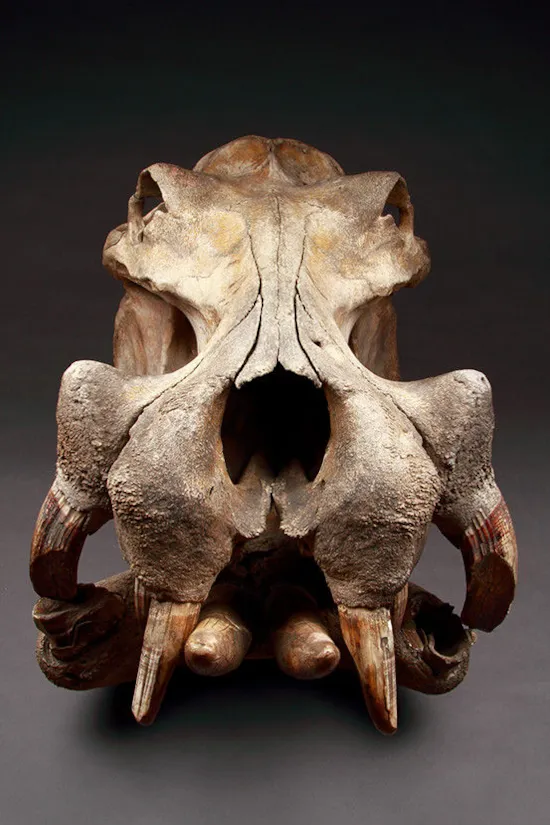African hippopotamus skull
An enormous African hippopotamus skull complete with teeth and tusks
Late 18th Century / Early 19th Century
Size: 54cm high, 49cm wide, 84cm deep - 21 ins high, 19 ins wide, 33 ins deep
CITES documentation for export
Late 18th Century / Early 19th Century
Size: 54cm high, 49cm wide, 84cm deep - 21 ins high, 19 ins wide, 33 ins deep
CITES documentation for export
The Emperor Rudolf II of Habsburg (1552-1612) built a large cabinet of curiosities in Prague. He had almost limitless resources to pursue his insatiable desire for new acquisitions of the rare, unusual and bizarre. One of his prized possessions was a painting of 'A Nile Horse' which is actually a hippopotamus.
The size of the skull of this specimen leads one to believe that it dates from an earlier period than the 19th century. The handwritten Rowland Ward label pasted to the underside of the wood stand dates from the early 1870's, but Rowland Ward was often commissioned to remount and restore particularly good older specimens that resided in aristocratic country collections.
There is another hippo skull in the Royal Danish Kunstkammer, 1737, that is recorded as entering the collection in 1689 and measured 63cm. This specimen measures 87cm and thus is possibly 17th century, certainly it must date from the 18th century.
The large curling malformed tusk indented the skull as it grew upwards and is perhaps the reason why this massive skull was originally preserved.
The size of the skull of this specimen leads one to believe that it dates from an earlier period than the 19th century. The handwritten Rowland Ward label pasted to the underside of the wood stand dates from the early 1870's, but Rowland Ward was often commissioned to remount and restore particularly good older specimens that resided in aristocratic country collections.
There is another hippo skull in the Royal Danish Kunstkammer, 1737, that is recorded as entering the collection in 1689 and measured 63cm. This specimen measures 87cm and thus is possibly 17th century, certainly it must date from the 18th century.
The large curling malformed tusk indented the skull as it grew upwards and is perhaps the reason why this massive skull was originally preserved.
Now Sold:
Similar old examples (19th century or earlier required for stock) The Hippopotamus Skull now requires an Article 10 document, please contact us with details and we can explain how to obtain the relevant paperwork
Similar old examples (19th century or earlier required for stock) The Hippopotamus Skull now requires an Article 10 document, please contact us with details and we can explain how to obtain the relevant paperwork
African hippopotamus skull

SOLD






